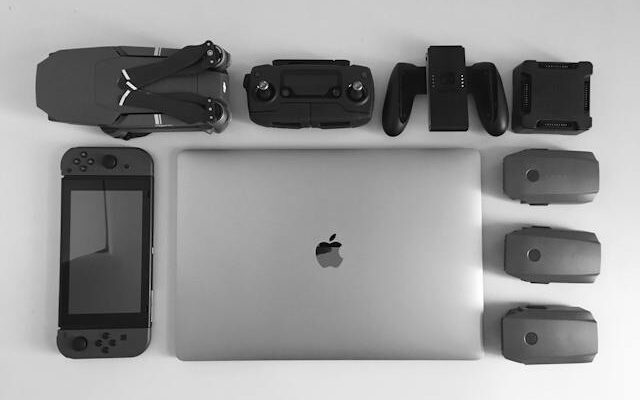In the modern world, gadgets have become an integral part of our daily lives. From smartphones to smartwatches, from laptops to voice-activated speakers, gadgets have evolved from mere necessities to lifestyle choices that shape how we communicate, work, entertain, and navigate the world. In this article, we will explore the fascinating journey of gadgets, from their early origins as functional tools to their current status as fashion statements and technological marvels.
1. The Early Days: Functional Tools
The concept of gadgets dates back to ancient times when humans invented and used simple tools to aid in their daily activities. These early gadgets were often rudimentary and served practical purposes. Examples include:
The Wheel: Invented around 3500 BC, the wheel revolutionized transportation and allowed for the creation of vehicles like carts and chariots.
The Compass: Developed in China during the Han Dynasty (2nd century BC), the compass enabled sailors to navigate accurately by aligning with the Earth’s magnetic field.
The Abacus: Used for thousands of years, the abacus facilitated arithmetic calculations and was a precursor to modern calculators.
As societies advanced, so did the complexity and functionality of gadgets. Mechanical devices like clocks, telescopes, and pocket watches emerged, reflecting both the scientific progress and the growing need for precise timekeeping and measurement.
2. The Technological Revolution: The Rise of Electronics
The 19th and 20th centuries witnessed a technological revolution that gave birth to the electronics industry. During this period, gadgets started incorporating electrical components and became more sophisticated. Key developments include:
The Telegraph: Invented by Samuel Morse in the 1830s, the telegraph allowed for long-distance communication through the transmission of electrical signals, revolutionizing information exchange.
The Telephone: Alexander Graham Bell’s invention of the telephone in 1876 paved the way for voice communication over long distances.
The Radio: Guglielmo Marconi’s work on radio waves and wireless communication in the late 19th century led to the development of radios, which became a staple in households for news and entertainment.
The Television: The mid-20th century saw the advent of television, transforming how people consumed visual content.
The Computer: The development of electronic computers, starting with early models like the ENIAC, laid the foundation for the digital age.
These electronic gadgets marked a shift from purely functional tools to devices that also offered entertainment and convenience. They became symbols of progress and modernity.
3. The Digital Revolution: Miniaturization and Portability
The late 20th century brought the digital revolution, with gadgets becoming smaller, more portable, and capable of multifunctionality. This era witnessed the birth of iconic gadgets, including:
The Personal Computer: PCs revolutionized work, enabling tasks like word processing, data analysis, and graphic design.
The Walkman: Sony’s portable cassette player introduced the concept of personalized music listening, allowing users to carry their music with them.
The Mobile Phone: The 1980s saw the emergence of mobile phones, which evolved from bulky devices to sleek, pocket-sized communication tools.
The Digital Camera: The shift from film to digital photography brought about compact and feature-rich digital cameras.
The iPod: Apple’s iPod, introduced in 2001, changed the music industry by making it easy to store and carry vast music libraries.
These gadgets not only made life more convenient but also sparked cultural shifts. The Walkman, for example, played a significant role in the popularization of portable music, while the mobile phone revolutionized communication and led to the smartphone era.
4. The Smartphone Era: Connectivity and Convergence
The introduction of smartphones marked a defining moment in the history of gadgets. Combining communication, computing, entertainment, and internet access, smartphones became central to modern life. Key developments in this era include:
The iPhone: Apple’s iPhone, launched in 2007, set a new standard for smartphones, featuring a touchscreen interface, an app ecosystem, and seamless connectivity.
Android: Google’s Android operating system provided an open platform for smartphones, leading to a diverse range of devices and rapid innovation.
Apps: The proliferation of mobile apps transformed smartphones into versatile tools for tasks ranging from productivity to entertainment.
High-Speed Mobile Internet: The deployment of 3G, 4G, and 5G networks made it possible to access the internet on smartphones with high speed and reliability.
Smartphone Cameras: Advances in smartphone camera technology allowed users to capture high-quality photos and videos on their devices.
Smartphones not only changed how we communicate but also how we access information, shop, navigate, and entertain ourselves. They have become extensions of our identities, with customizable apps, cases, and accessories reflecting individual preferences and lifestyles.
5. The Era of Wearables and Smart Devices
In recent years, the gadget landscape has expanded to include wearables and smart devices. These gadgets blur the line between technology and fashion, offering both functionality and style. Key developments in this era include:
Smartwatches: Devices like the Apple Watch and Fitbit have brought health and fitness tracking, notifications, and even mobile payments to our wrists.
Smart Home Devices: Gadgets like smart speakers (e.g., Amazon Echo, Google Home) and smart thermostats (e.g., Nest) provide voice-activated control of our homes.
Augmented Reality (AR) and Virtual Reality (VR): AR glasses like Google Glass and VR headsets like the Oculus Rift offer immersive experiences for entertainment and education.
Wearable Health Tech: Wearable devices can monitor heart rate, sleep patterns, and physical activity, helping individuals manage their health.
These gadgets represent a new frontier in technology, blurring the boundaries between the digital and physical worlds. They offer convenience, connectivity, and novel experiences that shape our daily lives and leisure activities.
6. Future Trends and Beyond
As technology continues to advance, the evolution of gadgets shows no signs of slowing down. Here are some future trends and possibilities:
Artificial Intelligence: AI-driven gadgets will become more prevalent, offering personalized recommendations, intelligent automation, and enhanced user experiences.
Foldable Devices: Foldable smartphones and tablets are poised to reshape how we interact with screens, offering portability without sacrificing screen real estate.
Biometric Gadgets: Devices that incorporate biometrics, such as fingerprint scanners and facial recognition, will provide enhanced security and personalization.
Sustainable Tech: Gadgets with eco-friendly materials and energy-efficient designs will address sustainability concerns.
Neurotechnology: Brain-computer interfaces (BCIs) and neurofeedback devices may offer new ways to interact with technology and control gadgets using our thoughts.
In conclusion, the evolution of gadgets reflects the ever-changing landscape of technology and human innovation. From functional tools to lifestyle accessories, gadgets have not only transformed our daily routines but have also become symbols of progress, personalization, and connectivity in our modern world. As we look to the future, the possibilities for gadgets are limitless, promising even more exciting and transformative developments in the years to come.






Comments